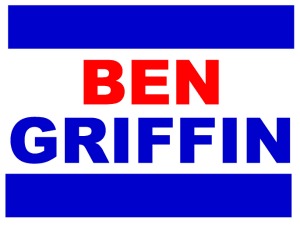
“What’s in a name?” Juliet Capulet asks in one of William Shakespeare’s best known plays. If you’re talking about elections in which voters don’t know the candidates very well, the answer is quite a lot, according to new Vanderbilt political science research.
Mere name recognition can give candidates an important advantage in political races in which voters know little about any of the contenders, according to the study by political scientists Cindy Kam and Elizabeth Zechmeister.
“Our study offers fairly conclusive evidence that, in low-information races, a candidate’s name recognition alone positively affects voter support,” said Zechmeister, who co-authored the paper with Kam.
Although the media pays a lot of attention to high-profile races, in the majority of decisions that American voters make, they have very little information about the candidates. Sometimes partisanship is not even available, so voters need to rely on some shortcuts to make decisions. “These findings are important because low-information races are the rule, not the exception, in American politics,” said Kam.
The two researchers, both of whom are associate professors of political science at Vanderbilt University, found that individuals not only favor candidates with more familiar names, but also perceive candidates with more familiar names to be more viable. [rquote]Name recognition matters in low-information races because people want to support likely winners.[/rquote]
“This issue is important for politicians and their campaign teams,” Kam said. “With limited resources, campaigns must decide how much to spend on yard signs, buttons, bumper stickers and other strategies that serve to increase the public’s familiarity with the candidate’s name. Our study suggests that such efforts can pay off.”
Kam and Zechmeister conducted three laboratory experiments and a small-scale field experiment in Nashville, Tenn., for their study, “Name Recognition and Candidate Support.”
In the first experiment, the researchers subliminally flashed either a hypothetical candidate’s name or a string of letters in front of experimental subjects. Subjects who saw the candidate’s name were more supportive of that candidate than subjects who did not see the candidate’s name, and they viewed the candidate as more viable as well. In two later experiments, Kam and Zechmeister showed that mere recognition effects dissipate when more politically relevant information, such as incumbency status, are presented to voters.

For the field experiment, the professors investigated name recognition in the context of a real election campaign. This study was conducted two months before the upcoming Metropolitan Nashville election, at a time when the real candidates in the race were just beginning to gear up their campaigns.
Kam and Zechmeister had the fictitious name “Ben Griffin” printed on political yard signs and placed on the lawn of a cooperating homeowner. The home was located on a street near a local elementary school. The researchers had previously determined that about half of all school traffic would pass by the location of the fictitious signs.
Three days after the signs were posted, the nearby school’s Parent Teacher Organization, which was cooperating with the professors, emailed the school’s parents a link to a short internet survey. Parents were asked to complete the survey in order to earn $5 per family for the school.
Survey respondents were asked to select their top three choices for the county’s at-large council seats. The seven options included the five actual incumbent candidates running for office along with two fictitious candidates, one of whom was Ben Griffin.
[rquote]Kam and Zechmeister found that nearly a quarter of the respondents who had driven by the signs for the fictitious Ben Griffin placed him among their top three choices for the at-large council seats.[/rquote] Meanwhile, only about 14 percent of the respondents in the control group (those who would not have driven by the fictitious candidate signs) placed Griffin among their top three choices. “The 10 percent difference is sizable given the small number of days we carried out the experiment and how unobtrusive the yard signs were,” Zechmeister said.
“Our field experiment confirmed the earlier findings in the lab: in low-information races, name recognition increases candidate support,” Kam said.
Data for the study were collected through the Research on Individuals, Politics & Society Laboratory at Vanderbilt University and The Ominibus Project at UC Davis.
For more information on the study, contact Kam at cindy.d.kam@vanderbilt.edu or Zechmeister at liz.zechmeister@vanderbilt.edu.